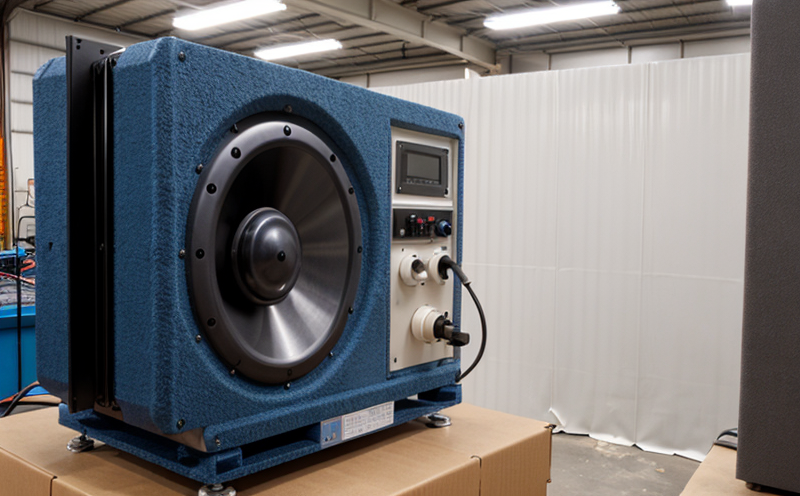IEC 60704-2-16 Hand Mixer Noise Testing
The IEC 60704-2-16 standard is specifically designed for evaluating the noise generated by household electrical appliances, including hand mixers. This standard ensures that products meet stringent acoustic performance criteria, which not only enhances user comfort but also addresses potential health concerns associated with excessive noise levels.
Consumer electronics and small electrical appliances must adhere to this standard if they are intended for use in residential settings. The primary focus is on the sound pressure level (SPL) produced by these devices during normal operation. Compliance with IEC 60704-2-16 helps manufacturers ensure that their products meet international regulatory requirements and achieve a higher level of consumer satisfaction.
The testing procedure outlined in this standard involves measuring the noise emitted by hand mixers at various operating speeds and under specified conditions. This ensures that consumers are informed about the expected sound levels when using the product, thereby facilitating informed purchasing decisions.
Compliance with IEC 60704-2-16 is crucial for manufacturers aiming to comply with global regulations and achieve brand reputation through quality assurance. The testing process involves rigorous measurement techniques that provide accurate data on SPL, allowing for continuous improvement in product design.
The standard also considers the impact of noise pollution on public health. Excessive noise can lead to stress, sleep disturbances, and other health issues. By adhering to this standard, manufacturers contribute positively to societal well-being by ensuring their products do not exceed acceptable noise levels.
In summary, IEC 60704-2-16 is a vital tool for manufacturers of hand mixers looking to ensure compliance with international standards and enhance the overall user experience. The testing process provides detailed insights into the acoustic performance of these devices, ensuring they meet both regulatory requirements and consumer expectations.
Scope and Methodology
The scope of IEC 60704-2-16 encompasses the measurement and evaluation of noise emitted by hand mixers during their normal operation. The methodology involves several key steps to ensure accurate and reliable results:
| Step | Description |
|---|---|
| Setup | The testing setup includes a sound chamber with appropriate absorption materials to minimize external noise interference. |
| Instrumentation | A calibrated sound level meter is used to measure the sound pressure levels at various operational speeds of the hand mixer. |
| Sampling | Measurements are taken over a representative sample size to ensure statistical significance and reliability of results. |
| Data Analysis | The collected data is analyzed against predefined thresholds specified in IEC 60704-2-16. |
The testing process begins with the setup of a controlled environment to ensure accurate measurements. The hand mixer is then operated at different speeds, and sound pressure levels are recorded using calibrated equipment. This data is analyzed against the specified thresholds outlined in the standard to determine compliance.
It's important to note that the test parameters must be strictly adhered to for consistent results. Factors such as room temperature, humidity, and background noise can significantly affect the measurements, so these variables are controlled during testing.
Customer Impact and Satisfaction
The impact of IEC 60704-2-16 on customers is substantial. By ensuring that hand mixers meet stringent noise emission standards, manufacturers can enhance user satisfaction by providing products that are not only functional but also quiet in operation.
Quiet appliances contribute to a more pleasant kitchen environment, reducing stress and enhancing overall well-being. This is particularly important for individuals who may be sensitive to sound or have specific requirements regarding noise levels, such as people with hearing aids or those living in densely populated areas.
The standard also plays a role in improving brand reputation by demonstrating a commitment to quality and customer satisfaction. Manufacturers that comply with IEC 60704-2-16 can expect higher customer loyalty and positive reviews, which are crucial for maintaining market share and attracting new customers.
Furthermore, compliance with this standard can lead to increased sales as it reassures potential buyers about the quality of the product. This is especially true in competitive markets where noise levels have become a key differentiator among similar products.
Environmental and Sustainability Contributions
The IEC 60704-2-16 standard contributes positively to environmental sustainability by promoting the development of quieter, more efficient appliances. Reduced noise levels can lead to less disturbance to local ecosystems, especially in densely populated urban areas.
By adhering to this standard, manufacturers are also contributing to a broader effort towards reducing noise pollution globally. This is part of a wider initiative aimed at improving public health and well-being by addressing the negative impacts of excessive noise on communities.
The testing process outlined in IEC 60704-2-16 helps identify areas where further improvements can be made to reduce noise emissions, leading to more sustainable product designs. This not only benefits consumers but also supports environmental conservation efforts.





